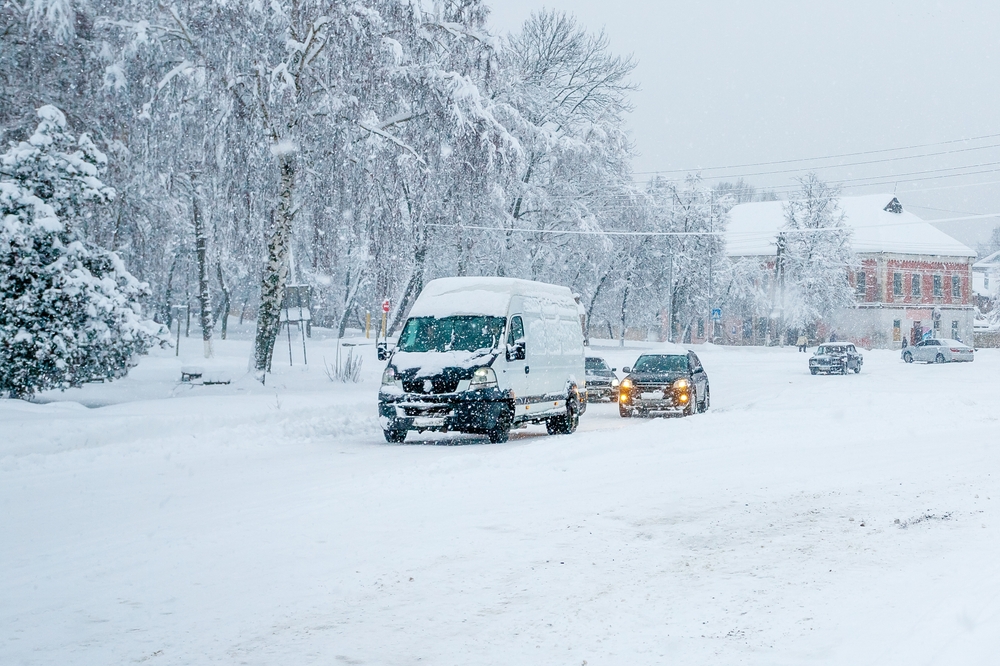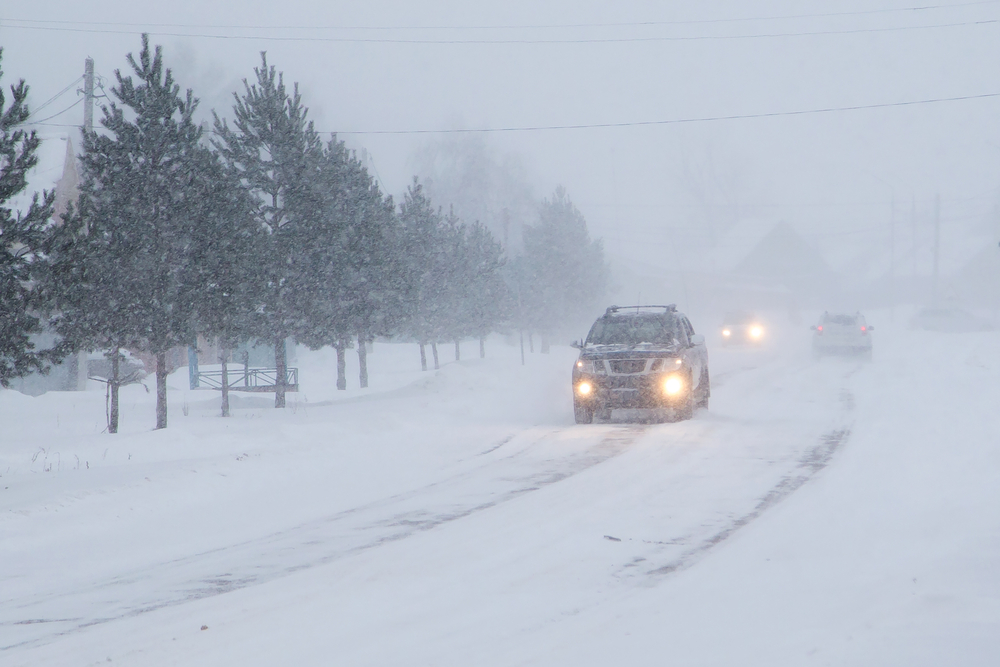Winter driving can be tricky, especially when snow and ice make roads slippery and unpredictable. Whether you’re a seasoned driver or just looking to brush up on your winter skills, knowing how to handle these conditions is essential for staying safe. In this article, we’ve put together 15 practical tips to help you navigate the winter months with confidence and ease.
Contents
Slow Down

Driving at a slower speed on slick surfaces is essential for maintaining control of your vehicle. Ice and snow drastically reduce traction, so lowering your speed gives you more time to react to unexpected conditions, such as black ice or sudden stops. It’s better to arrive late than to risk an accident by driving too fast.
Increase the Following Distance

On icy or snowy roads, stopping distances can be much longer than on dry pavement. Increasing the distance between you and the car ahead allows for more time to react to sudden braking or sliding, reducing the risk of rear-end collisions.
Use Winter Tires

Winter tires are specifically designed for cold weather, snow, and ice. They have deeper treads and softer rubber compounds that remain flexible even in freezing temperatures, providing superior grip. All-season tires, while suitable for mild winter conditions, don’t offer the same level of traction on icy roads.
Clear Snow and Ice from Your Vehicle

Snow and ice accumulation on your vehicle can impair visibility and endanger other drivers. It’s important to clear all windows, mirrors, headlights, and your roof. Snow on the roof can also slide off unexpectedly, causing hazards for vehicles behind you.
Use Low Beams in Snow

High beams reflect off snowflakes, creating a glare that can make it harder to see. Using low beams in snowy conditions provides better visibility of the road and surrounding environment, helping you avoid obstacles and spot black ice.
Avoid Sudden Movements

Sudden steering, braking, or accelerating can cause your tires to lose traction and lead to a skid. Smooth, gradual inputs allow your vehicle’s tires to maintain grip, especially when roads are slick. This also helps you avoid losing control in a crisis situation.
Drive in a Higher Gear

When starting from a stop on snow or ice, shifting to a higher gear (such as second gear) can help reduce wheel spin. Lower gears tend to apply more power to the wheels, which can cause them to slip. Starting in a higher gear reduces the chance of spinning out and helps your vehicle move more smoothly.
Keep Your Gas Tank Half-Full

A half-full gas tank helps prevent moisture in the fuel lines from freezing. Cold temperatures can cause condensation to build up inside the gas tank, and a full tank minimizes this risk. Additionally, having more fuel gives you a buffer in case of long delays or getting stuck in a snowstorm.
Use Traction Control Systems

Modern vehicles come with traction and stability control systems designed to prevent wheel spin and maintain control in slippery conditions. Make sure these systems are turned on. They work by automatically applying the brakes to a spinning wheel, redistributing power to the wheels with better grip.
Know How to Recover from a Skid

If your vehicle starts to skid, the key is to remain calm. Steer gently into the skid (in the direction you want the car to go), rather than jerking the wheel or slamming on the brakes. Abrupt reactions can make the situation worse, so keeping your composure can help you regain control.
Avoid Cruise Control

Cruise control can be dangerous on slippery roads, as it may cause your car to maintain a set speed even when traction is lost. If you start to slide or lose grip, it can take longer to react and regain control. Always have your foot on the pedal when conditions are icy.
Stay in the Tracks of Other Vehicles

If the road is snow-covered, following in the tracks of other vehicles can provide more traction. Other drivers’ tires have already compacted the snow or cleared a path, which helps your tires maintain better grip. However, be cautious of debris or ice that could be hidden in the tracks.
Stay Calm in Emergencies

If you find yourself stuck in snow or sliding on ice, staying calm is critical. Panicking can make it harder to think clearly and take the right steps to regain control. If stuck, try rocking your car back and forth to free it, or use sand, salt, or kitty litter under the tires for traction.
Drive with Headlights On

Visibility is often reduced in winter due to snow, fog, or early darkness. Driving with your headlights on ensures that other drivers can see you, and it helps you spot obstacles, hazards, or icy patches on the road.
Avoid Parking in Snowbanks

Parking on or near snowbanks can trap your vehicle, especially if the snow hardens or the temperature drops. Try to park in cleared areas or places where snow is less likely to accumulate and freeze around your tires.
This article originally appeared in MyCarMakesNoise.
More from MyCarMakesNoise
25 Savvy Car-Buying Strategies Every Woman Should Know

Buying a car can be an empowering experience, but it’s important to go in prepared, especially with so many options and factors to consider. For women, being informed and confident can make all the difference in getting the right vehicle at the right price. Read More
Top 15 States Offering the Best Electric Vehicle Incentives

Switching to an electric vehicle (EV) can be a smart choice for both the environment and your wallet, especially if you live in a state that offers generous incentives. From tax credits to rebates, certain states are making it easier and more affordable to transition to electric. Read More
15 Challenges of Shifting to Electric Emergency Vehicles

Switching emergency vehicles to electric power is a complex process that comes with unique challenges. While electric vehicles offer environmental benefits and reduced fuel costs, adapting them for emergency services isn’t straightforward. Read More














